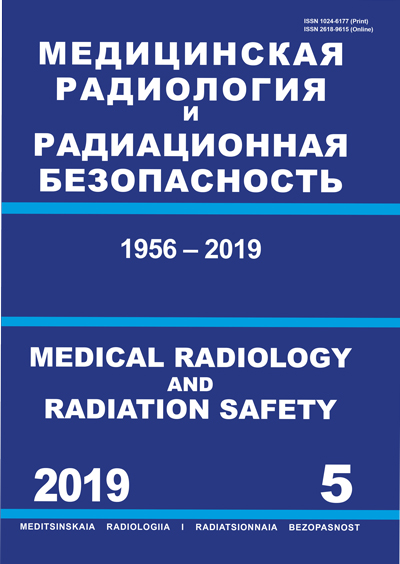Russian Federation
Chelyabinsk State University, Chelyabinsk, Russia
Russian Federation
Chelyabinsk, Russian Federation
Russian Federation
Russian Federation
Moscow, Russian Federation
Russian Federation
Siberian State Medical University (Professor)
Russian Federation
Russian Federation
CSCSTI 76.03
CSCSTI 76.33
Russian Classification of Professions by Education 14.04.02
Russian Classification of Professions by Education 31.06.2001
Russian Classification of Professions by Education 31.08.08
Russian Classification of Professions by Education 32.08.12
Russian Library and Bibliographic Classification 51
Russian Library and Bibliographic Classification 534
Russian Trade and Bibliographic Classification 5708
Russian Trade and Bibliographic Classification 5712
Russian Trade and Bibliographic Classification 5734
Russian Trade and Bibliographic Classification 6212
The current paper is devoted to the outcomes of the 66-th UNSCEAR Session which took place in Vienna during 10–14 June 2018. Within the framework of the meetings of the Working Group and subgroups the documents on the following projects were discussed: R.733. Evaluation of selected health effects and inference of risk due to radiation exposure. R.734. Evaluation of medical exposures to ionizing radiation. R.735. Evaluation of occupational exposures to ionizing radiation. R.736. Lung cancer from exposure to radon. R.737. Biological mechanisms relevant for the inference of cancer risks from low-dose radiation. R.738. Levels and effects of radiation exposure due to the accident at the Fukushima Daiichi nuclear power station: implications of information published since the 2013 UNSCEAR report. R.739. Second primary cancer after radiotherapy. R.740. Epidemiological studies of radiation and cancer. The Committee also discussed: the future research program; report to the UN General Assembly; implementation of a strategy plan to improve collection, analysis and dissemination of data on radiation exposure; public outreach activity including the strategy for the period 2020–2024.
UNSCEAR, 66-th Session, low doses, biological effects, epidemiology, medical exposure, occupational exposure
1. Occupational intakes of radionuclides: Part 1. ICRP Publication 130. Ann ICRP 44(2), Elsevier Ltd., 2015. ICRP, 2015.
2. Effects of Ionizing Radiation. Volume II: Scientific Annexes C, D and E. UNSCEAR 2006. Report, New York, 2009.
3. Health Effects of Exposure to Radon. Committee on Health Risks of Exposure to Radon, BEIR VI. National Academy Press, Washington, D.C., 1999.
4. Tomasek L, Rogel A, Tirmarche M, Mitton N, Laurier D. Lung cancer in French and Czech uranium miners: Radon-associated risk at low exposure rates and modifying effects of time since exposure and age at exposure. Radiat Res. 2008;169(2):125-37. DOI:https://doi.org/10.1667/RR0848.1.
5. Walsh L, Tschense A, Schnelzer M, Dufey F, Grosche B, Kreuzer M. The influence of radon exposures on lung cancer mortality in German uranium miners, 1946-2003. Radiat Res. 2010;173(1): 79-90. DOI:https://doi.org/10.1667/RR1803.1.
6. Rühm W, Eidemüller M, Kaiser JC. Biologically-based mechanistic models of radiation-related carcinogenesis applied to epidemiological data. Int J Radiat Biol. 2017;1093-117. DOI:https://doi.org/10.1080/09553002.2017.1310405.





